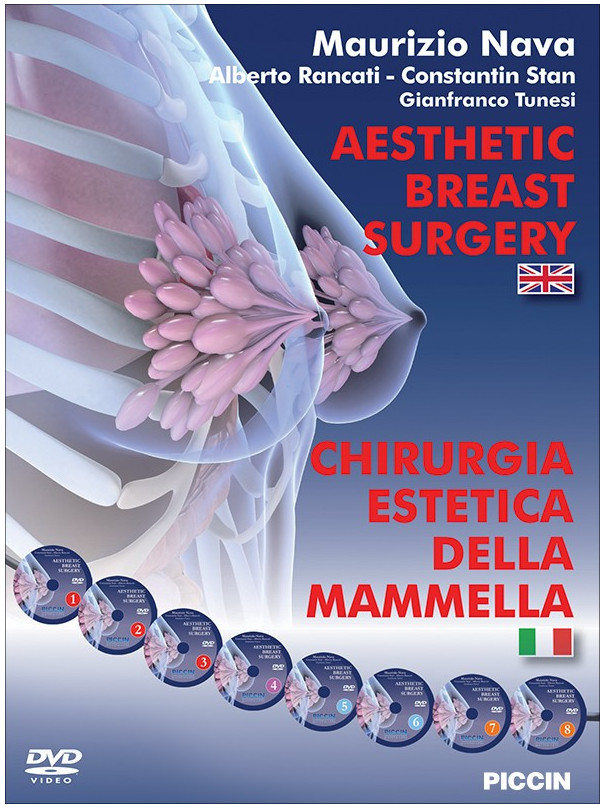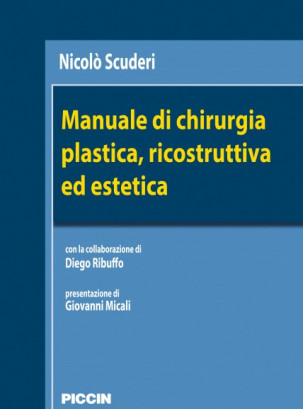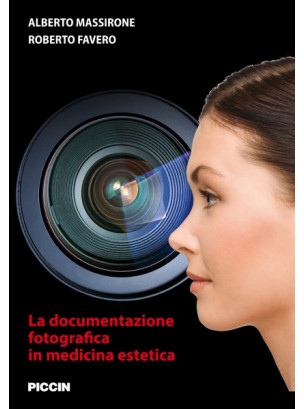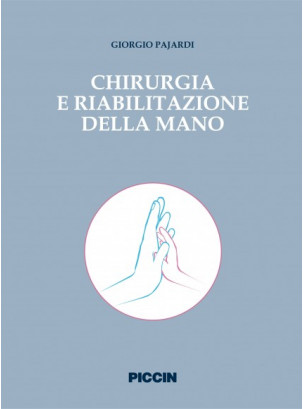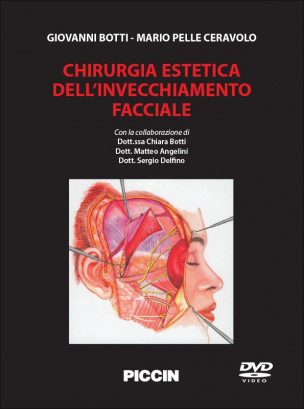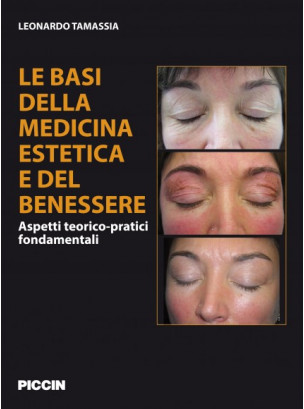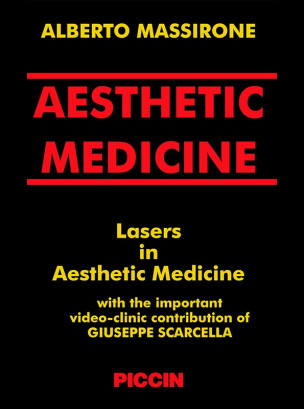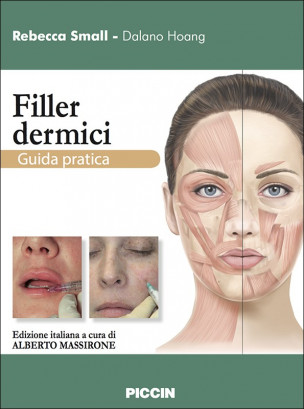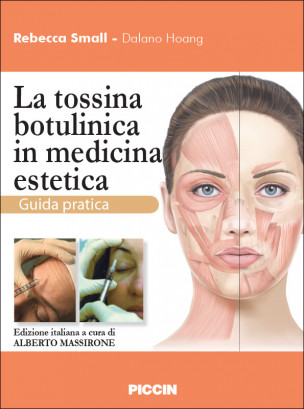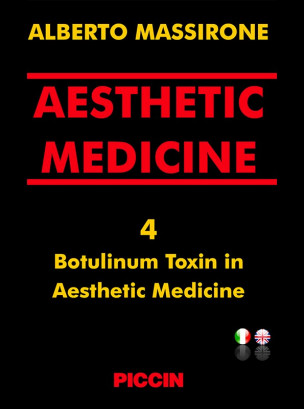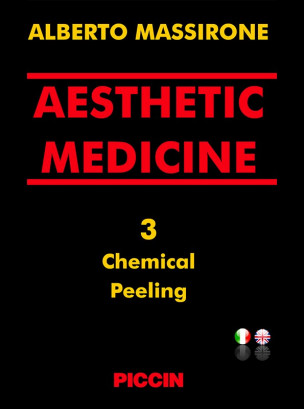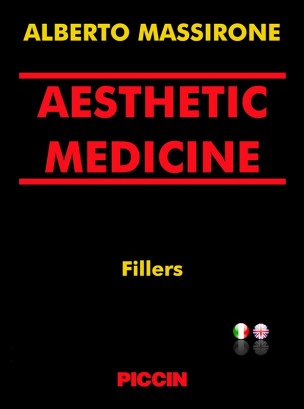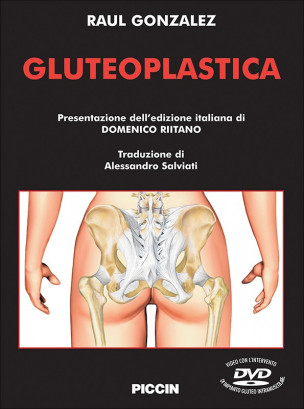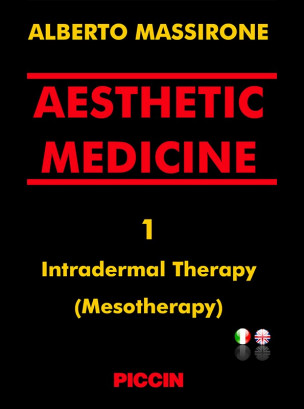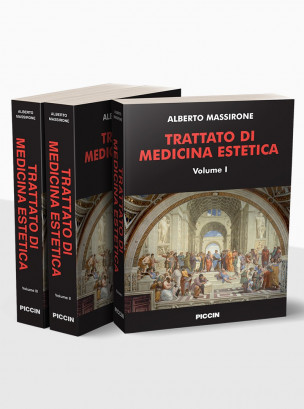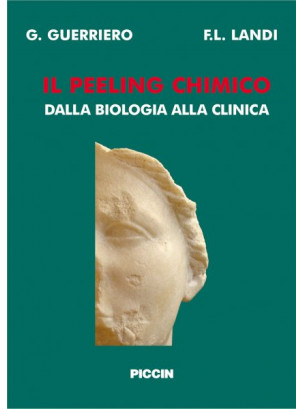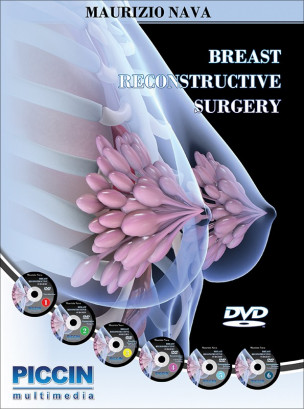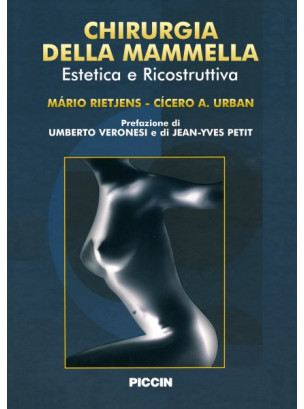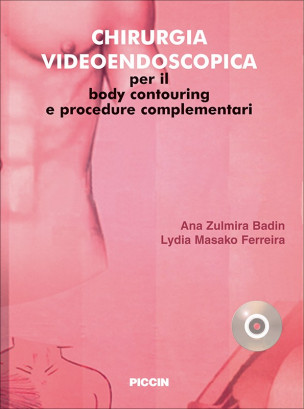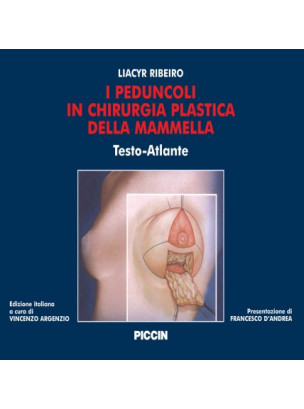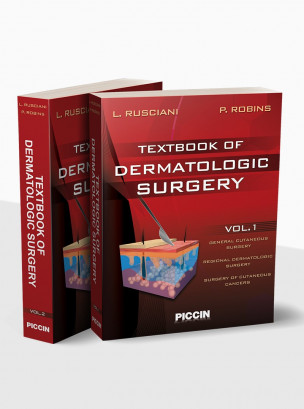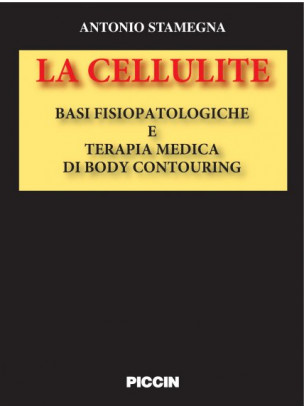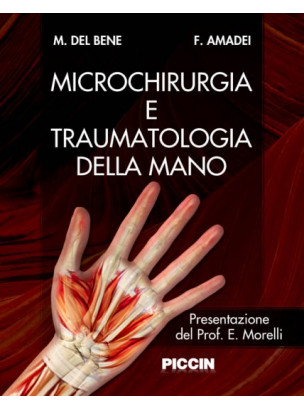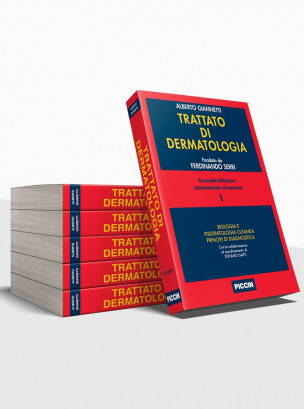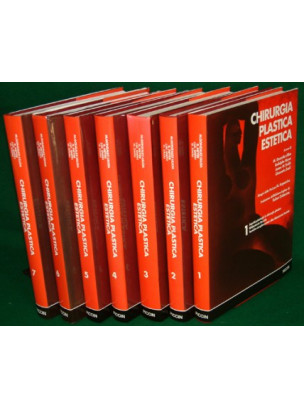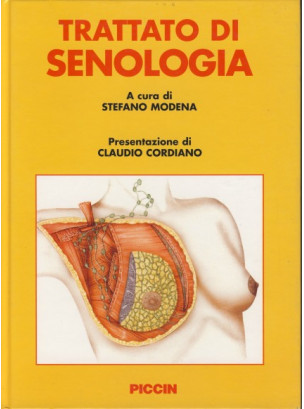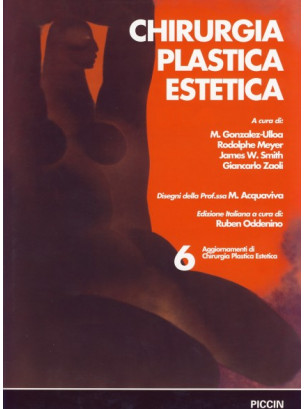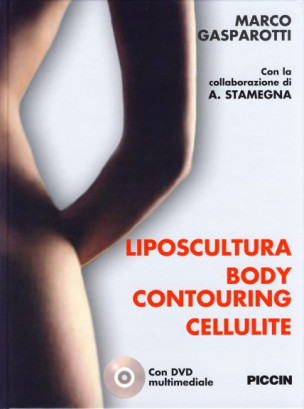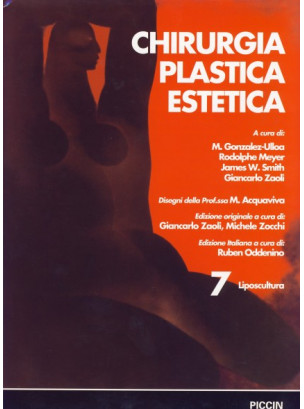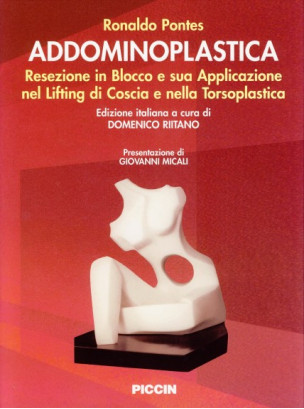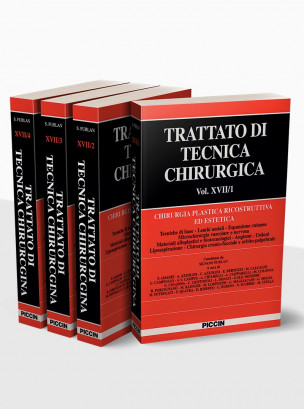Maurizio Nava - Constantin Stan - Alberto Rancati
732,00 €
8 dvd work
Introduction
It gives me great pleasure to accept this invitation on the part of Piccin Publishing House, who I must admit I had a part in persuading, to embark on a new adventure, if it can be called that, of producing a new work of surgical techniques.
The previous work came out just recently, and to be honest I am very pleased with the success it has had, and the favourable opinions that I have received from colleagues and friends who are using it in their everyday practice. This was indeed the original aim: to create something that would be really helpful to the surgeon in his everyday activities.
We would like to do the same in the field of aesthetic surgery in order to repeat the experience and this time attempt to offer even more if possible in terms of technique, theory and practice. The idea is a new work dedicated exclusively to aesthetic breast surgery. This is also a very complex field, which has to deal with various situations, according to the morphology and physical characteristics of the patient and the breast itself.
This is why we need to know not only about surgical techniques, planning and design, but also the materials at our disposal, as there are many novelties on the market today, going from breast implants themselves, to other materials that are beginning to be used to improve the aesthetic result of the breast.
In this work, apart from the contribution of my colleagues, who have as always given me great help in the whole work, I have asked for the help of some friends with whom I share congresses and other activities, to obtain their contributions in certain specific matters in order to try and develop the techniques of aesthetic breast surgery as best as possible.
We have again decided to produce a series of DVDs, in order to try and develop everything connected with the technical aspect, and starting as always with the patient, the woman who wishes to improve her appearance, starting from the very first examination, from the planning stage. It is even more important in this field to enter into the desires of the patient and as I always say, create a kind of team together with her.
A strong team produces good results, a weak team leads to weak results, and scarce satisfaction on the part of the woman and the surgeon himself, who is the one responsible for the surgery. This is why it is important to understand the desires of the patient and show her what we really can offer her with our techniques and the material that we can use.
So, as I said before, we will start from planning, and go on to the operating theatre and see how to position the patient, then decide on the main surgical techniques, but also all the special techniques and tricks to try and obtain the best possible result, whether we are dealing with additive mastoplasty, reductive, or mastopexis. Also using special techniques, which are at times a bit of a challenge for the plastic surgeon, as in the case of tuberous breasts, or in secondary cases after breakdown of machinery or replacement of apparatus, or when returning to reductive mastoplasty.
The idea is to try and do as complete a job as possible, to offer the best in breast surgery to those who have come to this kind of surgery for the first time, and for young surgeons learning not only about reconstructive techniques but also the techniques of aesthetic surgery.
I was saying a work that will cover all these areas and at the same time, apart from all this information, give a training which I consider fundamental in breast surgery, whether this is aesthetic or not, which is diagnostics. Today unfortunately we know that in the Western world one patient in eight runs the risk of having a breast tumour. One in eight is not little, so I think that if we operate, if we carry out surgery or if we introduce materials into the breast, we must be sure that there is no risk of any pathological problems.
Even more, I would say that we have to discuss these things directly with the patient and make absolutely sure that there is no family history, and give her as much information as possible. At the same time we must be sure that in the post-operative stage and during the following years the patient, I mean the woman, can carry out the normal routine diagnostic tests: proper diagnosis with a mammogram, ultrasound scan and also clinical activity, which we ourselves, I repeat, should be following for a proper diagnosis of the breast.
This is the principal aim of this work. I am sure that together with the help of my colleagues, my collaborators and our publisher Piccin, we will be able to produce a new work that will be of great help to all those who work in this specific branch of plastic surgery.
MAURIZIO NAVA
Introduzione
Con piacere ho accettato l’invito della Piccin che, ad essere sincero, è stata stimolata anche da me ad iniziare una nuova avventura, se così si può chiamare, nel comporre una nuova opera di tecniche chirurgiche.
La precedente opera è uscita recentemente e, devo essere onesto, sono molto felice del successo che ha riscontrato, per i pareri favorevoli che ho ricevuto da amici e colleghi e chirurghi che la utilizzano proprio nella pratica comune. Questo era l’obiettivo: creare qualcosa che fosse veramente d’aiuto per i chirurghi nella loro attività quotidiana.
Lo stesso vorremmo fare nel campo della chirurgia estetica proprio per ripetere e cercare di dare ancora di più, se è possibile, in termini di tecniche, di teoria e di pratica. Abbiamo pensato a una nuova opera dedicata completamente alla chirurgia estetica della mammella. Anche questo è un campo molto complesso che parte da situazioni differenti, a seconda della morfologia e delle caratteristiche fisiche della paziente e della mammella stessa.
Per questo si richiede una conoscenza non solo delle tecniche chirurgiche, dei planning e dei disegni, ma anche una conoscenza appropriata dei materiali a disposizione, poiché in effetti oggi sul mercato ci sono tante novità che non vanno solo dalle protesi mammarie stesse, ma ad altri materiali che cominciano ad essere utilizzati per migliorare il risultato estetico della mammella.
In quest’opera oltre al contributo dei miei collaboratori, che come sempre danno un grande aiuto nello svolgimento completo della stessa, ho chiesto l’aiuto di alcuni amici con i quali condivido congressi e altre attività, per avere il loro contributo su alcuni temi specifici e cercare di approfondire il più possibile le tecniche relative alla chirurgia estetica della mammella.
Anche qui abbiamo voluto ripetere una serie di dvd cercando di sviluppare tutto quello che era l’aspetto tecnico e iniziando come sempre dalla paziente, dalla donna che richiede il miglioramento del risultato cosmetico, partendo proprio dalla visita, dalla pianificazione. Ancora di più in questo campo bisogna entrare nel merito del desiderio della paziente e come dico sempre, creare un “team”, una specie di squadra, assieme alla donna.
Una squadra forte crea un buon risultato, una squadra debole porta ad un risultato non buono che vuol dire una non soddisfazione della donna e del chirurgo stesso che pratica la chirurgia. Per questo è importante capire il desiderio della paziente e manifestarle cosa noi veramente possiamo darle con le nostre tecniche e con i materiali che possiamo utilizzare.
Come ho detto partiremo quindi dalla pianificazione, passeremo attraverso la sala operatoria, per capire come va posizionata la paziente, quindi quali sono le tecniche chirurgiche principali, ma anche tutte le tecniche particolari e i trucchi per cercare di ottenere il miglior risultato possibile, sia che si tratti di mastoplastica additiva, riduttiva, di mastopessi.
Inoltre utilizzando tecniche anche un po’ particolari, che a volte sono un po’ una sfida per il chirurgo plastico, come nel caso di mammelle tuberose o nei casi secondari dopo una rottura di un impianto o per sostituzione di un impianto o ripresa di una mastoplastica riduttiva.
Il tutto per cercare di dare un’opera completa che offra il meglio della chirurgia della mammella a colui che per la prima volta si avvicina a questo tipo di chirurgia, per gli specializzandi che debbono imparare non solo le tecniche ricostruttive ma anche le tecniche di chirurgia estetica.
Dicevo un’opera che copra tutte queste aree e che nello stesso tempo dia oltre a tutte queste informazioni anche una formazione che io ritengo fondamentale nella chirurgia della mammella sia essa estetica e non, che è la diagnostica.
Oggi sappiamo purtroppo che nell’area occidentale una paziente su otto corre il rischio di avere un tumore alla mammella. Una su otto non è poco, di conseguenza credo che se operiamo, se facciamo della chirurgia o se introduciamo dei materiali nella mammella, dobbiamo essere sicuri che non vi siano problemi patologici.
Ancor di più direi di indagare bene che non vi sia familiarità, entrando in contatto diretto e informando bene la paziente. Nello stesso tempo dobbiamo essere sicuri che nel post operatorio e nel proseguo degli anni la paziente, o meglio la donna, possa eseguire i normali esami di routine diagnostici per consentire una buona diagnosi attraverso la mammografia, l’ecografia e anche l’attività clinica, che noi stessi dovremmo seguire, ripeto, per una buona diagnosi della mammella.
Questo è lo scopo principale di quest’opera: sono sicuro che attraverso il contributo dei colleghi, dei miei collaboratori e della Piccin riusciremo a pubblicare una nuova opera che sia di grande aiuto per coloro che lavorano in questa branca specifica della chirurgia plastica.
MAURIZIO NAVA
Introduction
It gives me great pleasure to accept this invitation on the part of Piccin Publishing House, who I must admit I had a part in persuading, to embark on a new adventure, if it can be called that, of producing a new work of surgical techniques.
The previous work came out just recently, and to be honest I am very pleased with the success it has had, and the favourable opinions that I have received from colleagues and friends who are using it in their everyday practice. This was indeed the original aim: to create something that would be really helpful to the surgeon in his everyday activities.
We would like to do the same in the field of aesthetic surgery in order to repeat the experience and this time attempt to offer even more if possible in terms of technique, theory and practice. The idea is a new work dedicated exclusively to aesthetic breast surgery. This is also a very complex field, which has to deal with various situations, according to the morphology and physical characteristics of the patient and the breast itself.
This is why we need to know not only about surgical techniques, planning and design, but also the materials at our disposal, as there are many novelties on the market today, going from breast implants themselves, to other materials that are beginning to be used to improve the aesthetic result of the breast.
In this work, apart from the contribution of my colleagues, who have as always given me great help in the whole work, I have asked for the help of some friends with whom I share congresses and other activities, to obtain their contributions in certain specific matters in order to try and develop the techniques of aesthetic breast surgery as best as possible.
We have again decided to produce a series of DVDs, in order to try and develop everything connected with the technical aspect, and starting as always with the patient, the woman who wishes to improve her appearance, starting from the very first examination, from the planning stage. It is even more important in this field to enter into the desires of the patient and as I always say, create a kind of team together with her.
A strong team produces good results, a weak team leads to weak results, and scarce satisfaction on the part of the woman and the surgeon himself, who is the one responsible for the surgery. This is why it is important to understand the desires of the patient and show her what we really can offer her with our techniques and the material that we can use.
So, as I said before, we will start from planning, and go on to the operating theatre and see how to position the patient, then decide on the main surgical techniques, but also all the special techniques and tricks to try and obtain the best possible result, whether we are dealing with additive mastoplasty, reductive, or mastopexis. Also using special techniques, which are at times a bit of a challenge for the plastic surgeon, as in the case of tuberous breasts, or in secondary cases after breakdown of machinery or replacement of apparatus, or when returning to reductive mastoplasty.
The idea is to try and do as complete a job as possible, to offer the best in breast surgery to those who have come to this kind of surgery for the first time, and for young surgeons learning not only about reconstructive techniques but also the techniques of aesthetic surgery.
I was saying a work that will cover all these areas and at the same time, apart from all this information, give a training which I consider fundamental in breast surgery, whether this is aesthetic or not, which is diagnostics. Today unfortunately we know that in the Western world one patient in eight runs the risk of having a breast tumour. One in eight is not little, so I think that if we operate, if we carry out surgery or if we introduce materials into the breast, we must be sure that there is no risk of any pathological problems.
Even more, I would say that we have to discuss these things directly with the patient and make absolutely sure that there is no family history, and give her as much information as possible. At the same time we must be sure that in the post-operative stage and during the following years the patient, I mean the woman, can carry out the normal routine diagnostic tests: proper diagnosis with a mammogram, ultrasound scan and also clinical activity, which we ourselves, I repeat, should be following for a proper diagnosis of the breast.
This is the principal aim of this work. I am sure that together with the help of my colleagues, my collaborators and our publisher Piccin, we will be able to produce a new work that will be of great help to all those who work in this specific branch of plastic surgery.
MAURIZIO NAVA
Introduzione
Con piacere ho accettato l’invito della Piccin che, ad essere sincero, è stata stimolata anche da me ad iniziare una nuova avventura, se così si può chiamare, nel comporre una nuova opera di tecniche chirurgiche.
La precedente opera è uscita recentemente e, devo essere onesto, sono molto felice del successo che ha riscontrato, per i pareri favorevoli che ho ricevuto da amici e colleghi e chirurghi che la utilizzano proprio nella pratica comune. Questo era l’obiettivo: creare qualcosa che fosse veramente d’aiuto per i chirurghi nella loro attività quotidiana.
Lo stesso vorremmo fare nel campo della chirurgia estetica proprio per ripetere e cercare di dare ancora di più, se è possibile, in termini di tecniche, di teoria e di pratica. Abbiamo pensato a una nuova opera dedicata completamente alla chirurgia estetica della mammella. Anche questo è un campo molto complesso che parte da situazioni differenti, a seconda della morfologia e delle caratteristiche fisiche della paziente e della mammella stessa.
Per questo si richiede una conoscenza non solo delle tecniche chirurgiche, dei planning e dei disegni, ma anche una conoscenza appropriata dei materiali a disposizione, poiché in effetti oggi sul mercato ci sono tante novità che non vanno solo dalle protesi mammarie stesse, ma ad altri materiali che cominciano ad essere utilizzati per migliorare il risultato estetico della mammella.
In quest’opera oltre al contributo dei miei collaboratori, che come sempre danno un grande aiuto nello svolgimento completo della stessa, ho chiesto l’aiuto di alcuni amici con i quali condivido congressi e altre attività, per avere il loro contributo su alcuni temi specifici e cercare di approfondire il più possibile le tecniche relative alla chirurgia estetica della mammella.
Anche qui abbiamo voluto ripetere una serie di dvd cercando di sviluppare tutto quello che era l’aspetto tecnico e iniziando come sempre dalla paziente, dalla donna che richiede il miglioramento del risultato cosmetico, partendo proprio dalla visita, dalla pianificazione. Ancora di più in questo campo bisogna entrare nel merito del desiderio della paziente e come dico sempre, creare un “team”, una specie di squadra, assieme alla donna.
Una squadra forte crea un buon risultato, una squadra debole porta ad un risultato non buono che vuol dire una non soddisfazione della donna e del chirurgo stesso che pratica la chirurgia. Per questo è importante capire il desiderio della paziente e manifestarle cosa noi veramente possiamo darle con le nostre tecniche e con i materiali che possiamo utilizzare.
Come ho detto partiremo quindi dalla pianificazione, passeremo attraverso la sala operatoria, per capire come va posizionata la paziente, quindi quali sono le tecniche chirurgiche principali, ma anche tutte le tecniche particolari e i trucchi per cercare di ottenere il miglior risultato possibile, sia che si tratti di mastoplastica additiva, riduttiva, di mastopessi.
Inoltre utilizzando tecniche anche un po’ particolari, che a volte sono un po’ una sfida per il chirurgo plastico, come nel caso di mammelle tuberose o nei casi secondari dopo una rottura di un impianto o per sostituzione di un impianto o ripresa di una mastoplastica riduttiva.
Il tutto per cercare di dare un’opera completa che offra il meglio della chirurgia della mammella a colui che per la prima volta si avvicina a questo tipo di chirurgia, per gli specializzandi che debbono imparare non solo le tecniche ricostruttive ma anche le tecniche di chirurgia estetica.
Dicevo un’opera che copra tutte queste aree e che nello stesso tempo dia oltre a tutte queste informazioni anche una formazione che io ritengo fondamentale nella chirurgia della mammella sia essa estetica e non, che è la diagnostica.
Oggi sappiamo purtroppo che nell’area occidentale una paziente su otto corre il rischio di avere un tumore alla mammella. Una su otto non è poco, di conseguenza credo che se operiamo, se facciamo della chirurgia o se introduciamo dei materiali nella mammella, dobbiamo essere sicuri che non vi siano problemi patologici.
Ancor di più direi di indagare bene che non vi sia familiarità, entrando in contatto diretto e informando bene la paziente. Nello stesso tempo dobbiamo essere sicuri che nel post operatorio e nel proseguo degli anni la paziente, o meglio la donna, possa eseguire i normali esami di routine diagnostici per consentire una buona diagnosi attraverso la mammografia, l’ecografia e anche l’attività clinica, che noi stessi dovremmo seguire, ripeto, per una buona diagnosi della mammella.
Questo è lo scopo principale di quest’opera: sono sicuro che attraverso il contributo dei colleghi, dei miei collaboratori e della Piccin riusciremo a pubblicare una nuova opera che sia di grande aiuto per coloro che lavorano in questa branca specifica della chirurgia plastica.
MAURIZIO NAVA
No customer comments for the moment.


